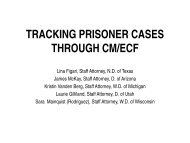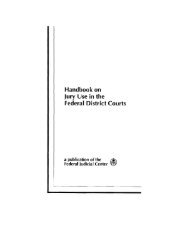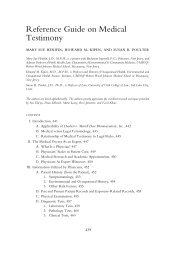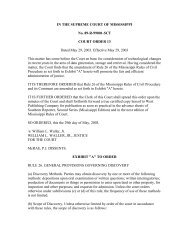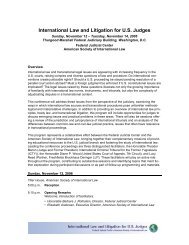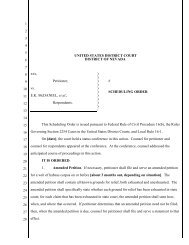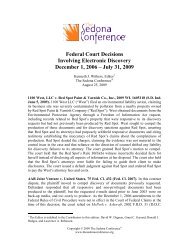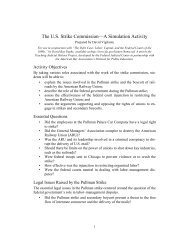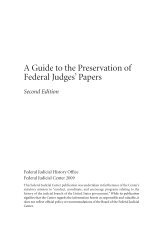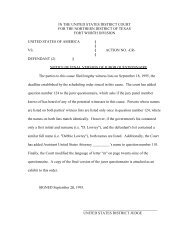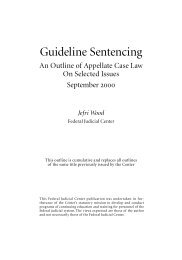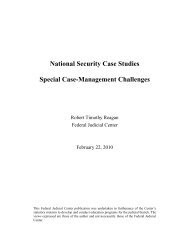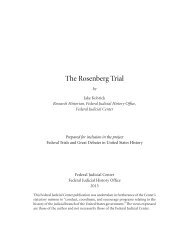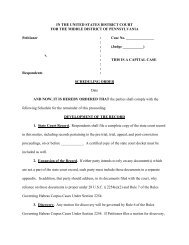Chambers Handbook for Judges - Federal Judicial Center
Chambers Handbook for Judges - Federal Judicial Center
Chambers Handbook for Judges - Federal Judicial Center
Create successful ePaper yourself
Turn your PDF publications into a flip-book with our unique Google optimized e-Paper software.
the court and, insofar as possible, <strong>for</strong> counsel and witnesses. Four different<br />
approaches to scheduling have been adopted:<br />
• Selection of a specific date and time by the judge or judge’s staff<br />
with notice to both counsel;<br />
• Selection of a date and time convenient <strong>for</strong> all involved after<br />
telephone or personal conferences among counsel and court personnel;<br />
• Selection of a date and time acceptable to the court by one attorney<br />
who then gives notice to other counsel; and<br />
• Permanent scheduling by the court of a weekly or monthly “motion<br />
day” at which any motions that are at issue may be heard as<br />
a matter of course, or, alternatively, <strong>for</strong> which particular motions<br />
are scheduled through one of the processes described above.<br />
In some courts in which a number of motions are heard on a single<br />
day, the following procedure is used. Several days in advance, the docket<br />
clerk or courtroom deputy prepares a list of the motions to be heard on<br />
a particular day, including the names of the cases and docket numbers.<br />
For each motion, a law clerk or secretary assembles the record, a copy<br />
of each memorandum, and all other relevant materials. (In addition,<br />
<strong>for</strong> motions of any complexity, some judges ask a law clerk to draft a<br />
bench memo summarizing the issues. <strong>Judges</strong> usually do some preparation<br />
in advance of the hearing date.) These are brought to the courtroom<br />
a short time be<strong>for</strong>e the opening of court and are placed close to<br />
the judge’s bench. A large number of motions may be scheduled, and<br />
the assembly of records and materials may be time-consuming. Organization<br />
and preparation are the keys to efficiency. Attorneys in a case<br />
are responsible <strong>for</strong> ensuring that witnesses are present at evidentiary<br />
hearings—either voluntarily or through use of subpoena. To avoid protracted<br />
waiting periods <strong>for</strong> other lawyers who have motions to be heard<br />
on the same day, most courts that have a regular “motion day” do not<br />
permit testimony to be heard on that day without a special order from<br />
the judge.<br />
In courts that hear oral argument on a number of motions on the<br />
same day, it is not unusual <strong>for</strong> the court to receive requests <strong>for</strong> a con-<br />
30 <strong>Chambers</strong> <strong>Handbook</strong> <strong>for</strong> <strong>Judges</strong>’ Law Clerks and Secretaries



